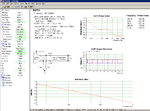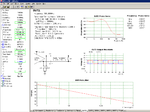maniana
Member level 4
Hi, I need to design a tunable (ideally 1MHz to 200MHz) sampling clock generator for 16bit 130MSPS ADC.
Super low jitter is desirable, 1fs ( I know 1fs is not realistic, although it would be nice to have, as operation in undersampling may be required)
I want to be able to change the frequency of the clock without changing the PCB, so I thought of a structure similar to described in:
pdfserv.maxim-ic.com/en/an/AN800.pdf
I have a GPS stabilized 10MHz and 20MHz TCXO that can provide a reference freq for i.e. the above system.
Could anyone advise on a structure, maybe similar to one described in AN800 above, or any other circuit that can generate a tunable clock for ADC with the lowest possible jitter?
A common sense is required when thinking about the price. I would put a soft limit at around 50$ for critical components.
Super low jitter is desirable, 1fs ( I know 1fs is not realistic, although it would be nice to have, as operation in undersampling may be required)
I want to be able to change the frequency of the clock without changing the PCB, so I thought of a structure similar to described in:
pdfserv.maxim-ic.com/en/an/AN800.pdf
I have a GPS stabilized 10MHz and 20MHz TCXO that can provide a reference freq for i.e. the above system.
Could anyone advise on a structure, maybe similar to one described in AN800 above, or any other circuit that can generate a tunable clock for ADC with the lowest possible jitter?
A common sense is required when thinking about the price. I would put a soft limit at around 50$ for critical components.

